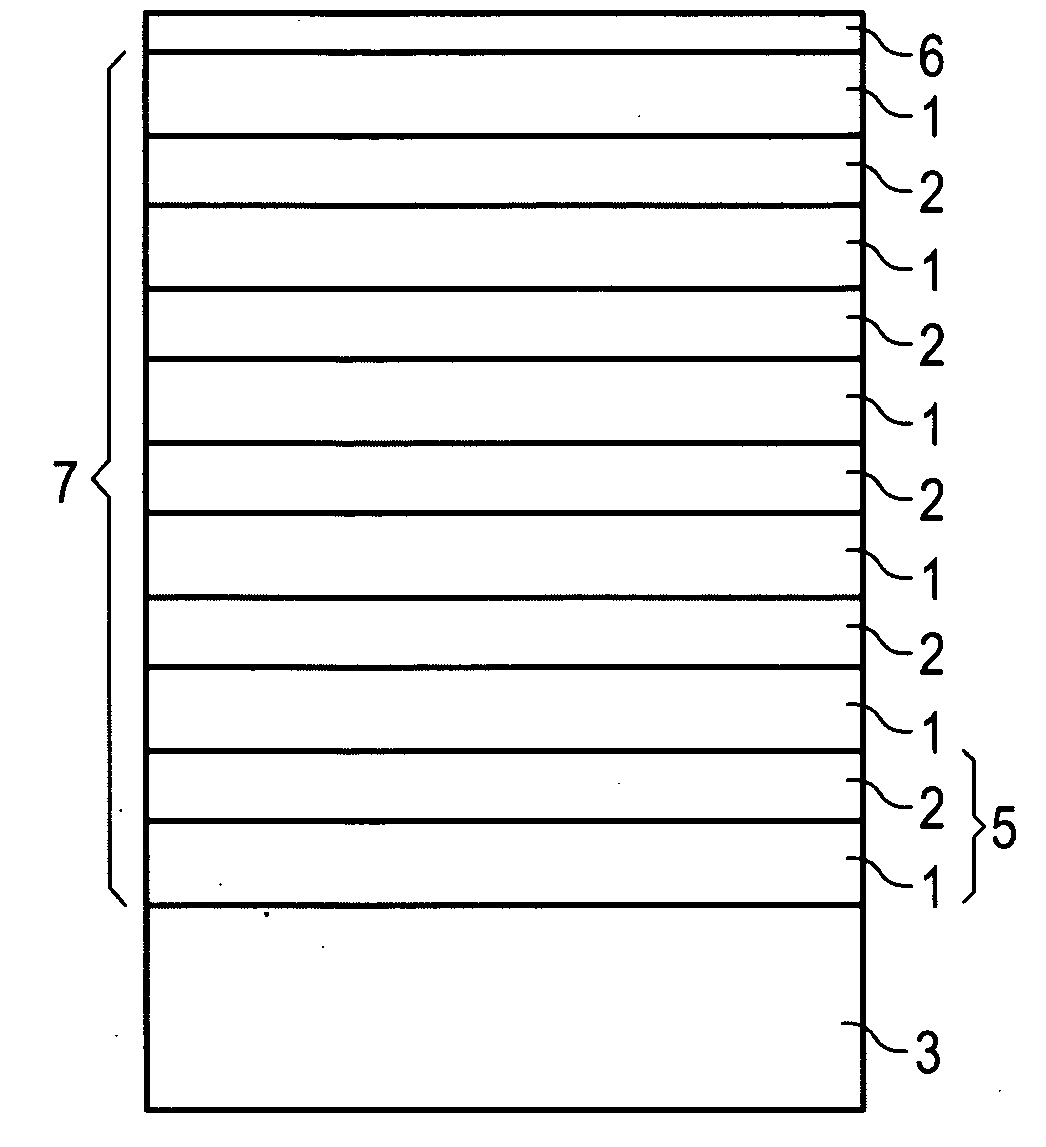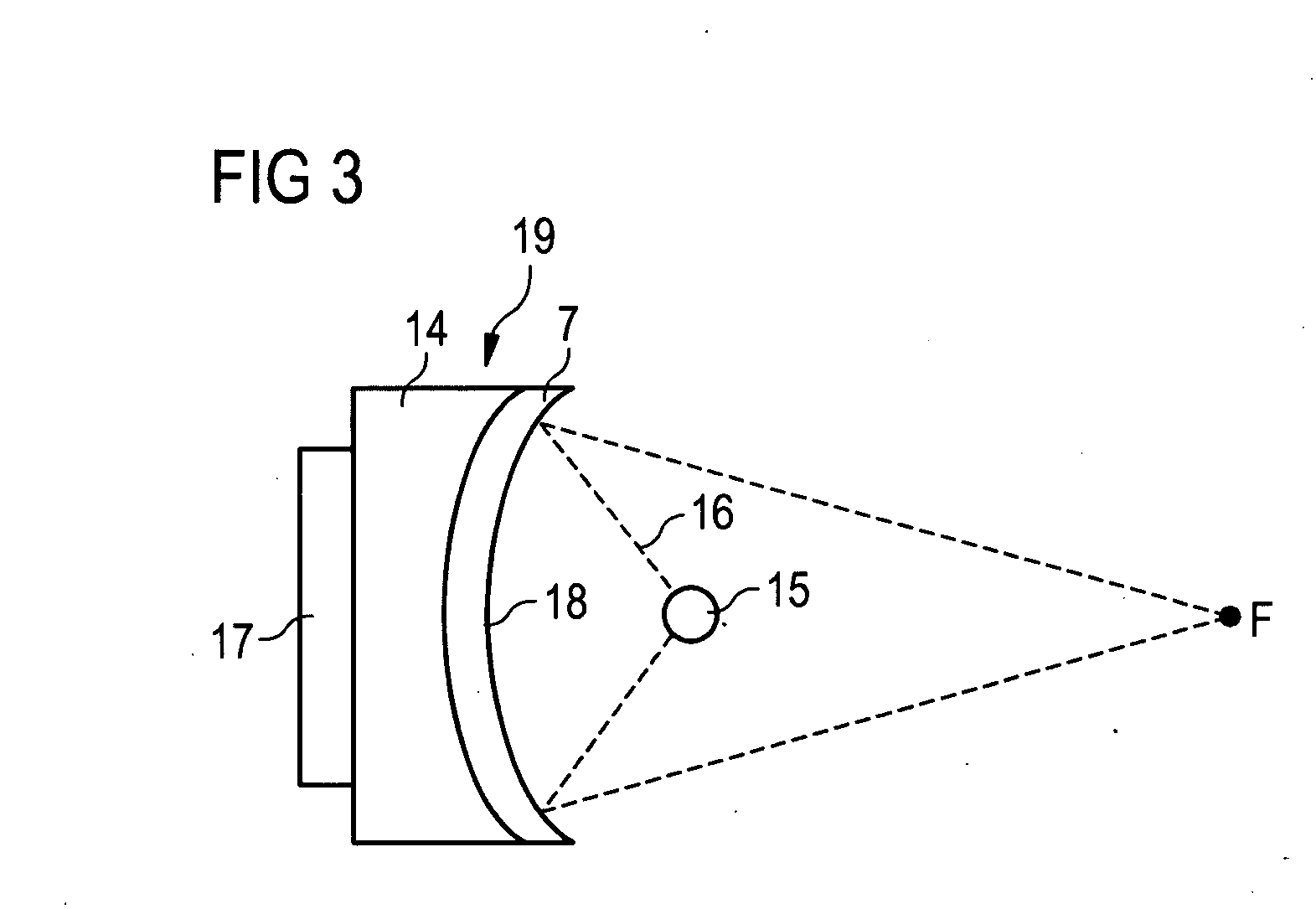Thermally Stable Multilayer Mirror for the EUV Spectral Range
a multi-layer mirror and spectral range technology, applied in the field of thermodynamic stability multi-layer mirrors, can solve the problems of significant reduction of reflection, degradation of such multi-layer mirrors, and impairment of the function of an optical system based on mo/si multi-layer mirrors, and achieve the effects of reducing reflection and/or period thickness, reducing contamination, and high long-term stability
- Summary
- Abstract
- Description
- Claims
- Application Information
AI Technical Summary
Benefits of technology
Problems solved by technology
Method used
Image
Examples
Embodiment Construction
[0034]In the multilayer mirror according to an embodiment of the invention as illustrated in FIG. 1, a layer sequence 7 containing a number of layer pairs 5 is applied to a substrate 3. In order to simplify the illustration, only four layer pairs 5 are illustrated. A preferred number of layer pairs 5 is 30 to 100.
[0035]The layer pairs 5 in each case include of a first layer 1 composed of a first material and a second layer 2 composed of a second material. In this case, at least one of the materials is a silicon boride or a molybdenum nitride.
[0036]In one preferred embodiment of the invention, the first material is a silicon boride, for example, SiB4 or SiB6.
[0037]In a further preferred embodiment of the invention, the first material is silicon and the second material is a molybdenum nitride, for example, MoN.
[0038]The substrate 3 is, for example, a semiconductor substrate, in particular, composed of silicon or SiC, or a substrate composed of a glass or a glass ceramic, in particular...
PUM
 Login to View More
Login to View More Abstract
Description
Claims
Application Information
 Login to View More
Login to View More - R&D
- Intellectual Property
- Life Sciences
- Materials
- Tech Scout
- Unparalleled Data Quality
- Higher Quality Content
- 60% Fewer Hallucinations
Browse by: Latest US Patents, China's latest patents, Technical Efficacy Thesaurus, Application Domain, Technology Topic, Popular Technical Reports.
© 2025 PatSnap. All rights reserved.Legal|Privacy policy|Modern Slavery Act Transparency Statement|Sitemap|About US| Contact US: help@patsnap.com



